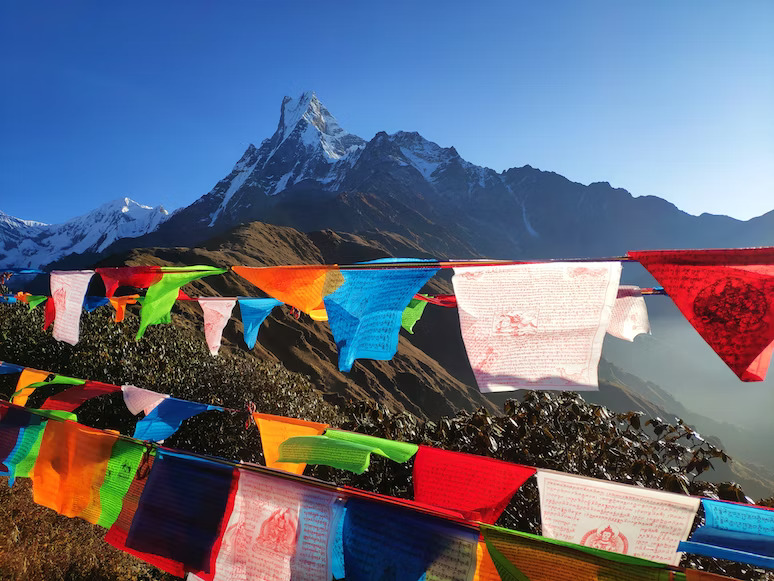Share your experience with us

Introduction:
Nepal, nestled in the heart of the Himalayas, is a country of astounding natural beauty and diverse landscapes. From the soaring peaks of Mount Everest to the lush green valleys and serene lakes, Nepal's weather and climate play a significant role in shaping its breathtaking scenery and enriching cultural heritage. In this blog, we will delve into the various seasons and climatic patterns that grace this enchanting nation throughout the year.
Spring, from March to May, is a much-loved season in Nepal. As the snow starts melting, the valleys burst into a riot of colors with blossoming rhododendrons and other wildflowers. The weather during this period is mild and pleasant, making it an ideal time for trekking and mountaineering adventures. The higher regions are rejuvenated, attracting hikers and nature enthusiasts from around the world.
Summer, from June to August, marks the beginning of the monsoon season in Nepal. The southern regions receive heavy rainfall, transforming the landscape into a lush green paradise. While the southern plains become hot and humid, the northern regions experience moderate temperatures. The monsoon can sometimes lead to landslides and roadblocks in remote areas, but it is also a time when Nepal's countryside is at its most vibrant and beautiful.
Autumn, from September to November, is often considered the best time to visit Nepal. The monsoon recedes, leaving behind clear skies, cool temperatures, and breathtaking vistas. This season is particularly favored by trekkers and mountaineers, as the stunning panoramas of the Himalayan peaks are at their most mesmerizing. The pleasant climate also allows for various cultural festivals and celebrations to take place.
Winter, from December to February, is a season of contrasts in Nepal. While the southern lowlands enjoy mild and pleasant weather, the northern highlands experience freezing temperatures and heavy snowfall. This period is ideal for those seeking a tranquil retreat in the lap of the mountains. Winter trekking, especially in the lower elevations, offers unique experiences, showcasing the stunning winter landscapes.
Due to Nepal's varying altitudes, its climate can differ significantly from one region to another. The lowlands, known as the Terai region, have a subtropical climate with hot summers and mild winters. As you ascend towards the Himalayas, the temperatures drop, and alpine climates prevail, with chilly winters and cool summers. The high-altitude regions, such as the Everest Base Camp and Annapurna Circuit, experience extreme cold and harsh weather conditions.
Nepal, like many other countries, is not immune to the effects of climate change. Rising global temperatures, melting glaciers, and erratic weather patterns have direct implications for this mountainous nation. Glacial retreats may lead to increased risks of landslides, floods, and water scarcity in the long run. Understanding and mitigating the impacts of climate change are crucial for preserving Nepal's unique biodiversity and ensuring the well-being of its people.
Conclusion:
Nepal's weather and climate are as diverse as its landscapes and culture. From the colorful blooms of spring to the serene snowfall of winter, each season offers a unique experience to visitors and locals alike. Whether you seek adventure in the Himalayas, a tranquil escape in nature's lap, or a glimpse of vibrant cultural festivities, Nepal has something to offer throughout the year. However, with the looming threat of climate change, it is vital for everyone to play their part in protecting this enchanting land for future generations to appreciate and cherish.